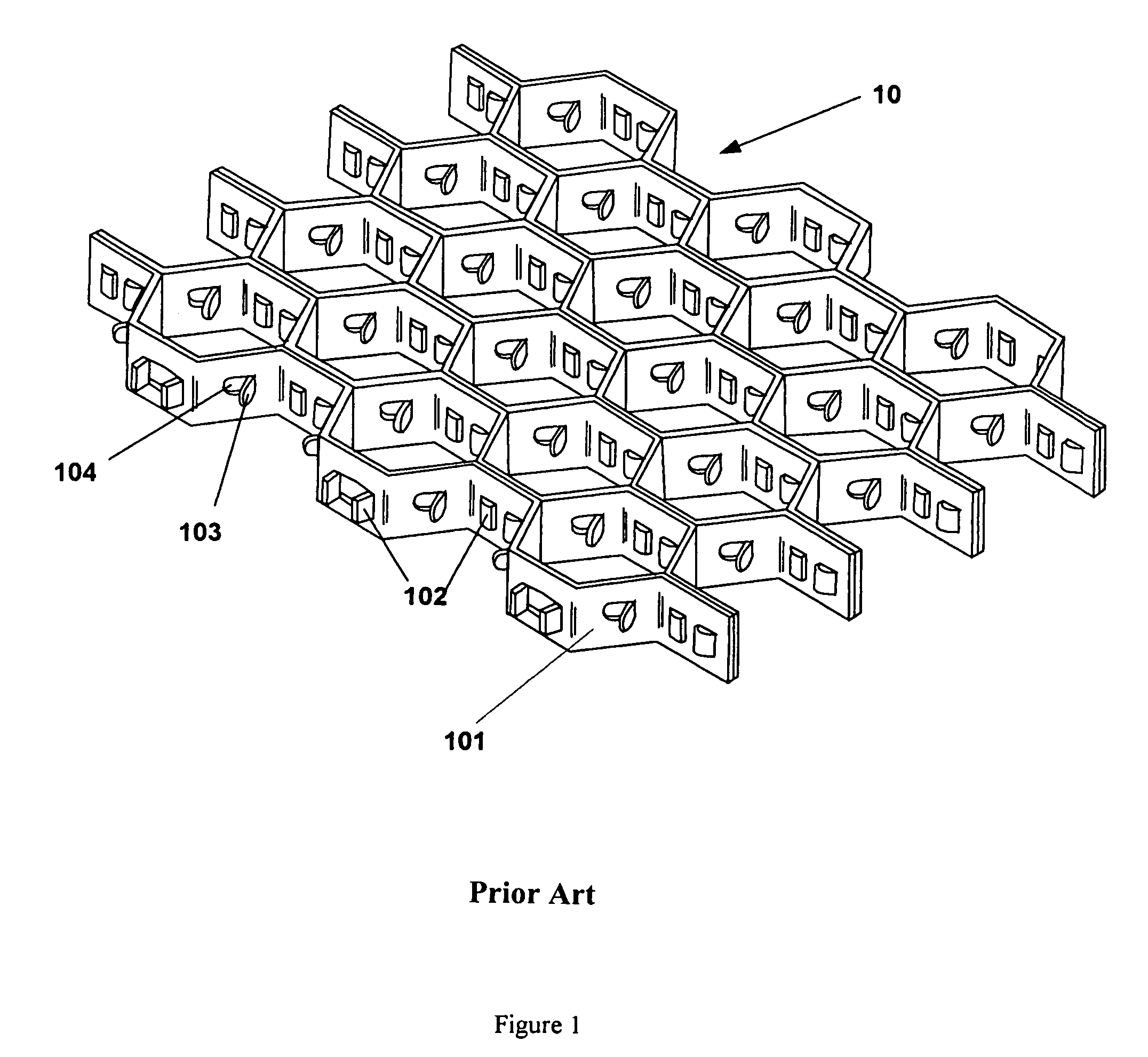Tiles with embedded locating rods for erosion resistant linings
- Summary
- Abstract
- Description
- Claims
- Application Information
AI Technical Summary
Benefits of technology
Problems solved by technology
Method used
Image
Examples
Embodiment Construction
[0027]Reference is now made to the forms depicted in FIGS. 1 through 8 wherein like numerals refer to like elements.
[0028]Surfaces that are subject to high levels of erosion, wear, corrosive elements, high temperatures and other such conditions need to be protected with materials that are resistant to such an environment. Refinery process units, such as fluid catalytic cracking units (FCCU's), furnaces and other types of equipment, hereinafter referred to generically as “reactors,” are types of such equipment having a need for such linings. Although there are other kinds of equipment that equally have a need for resistant linings, herein FCCU's are used an exemplary embodiment of such equipment. As such, the teachings of the present invention should not be viewed to be limited to linings only for the particular equipment described in the examples of the following description. Instead, it should be understood that the invention described herein is limited only to what is claimed in t...
PUM
 Login to View More
Login to View More Abstract
Description
Claims
Application Information
 Login to View More
Login to View More - R&D
- Intellectual Property
- Life Sciences
- Materials
- Tech Scout
- Unparalleled Data Quality
- Higher Quality Content
- 60% Fewer Hallucinations
Browse by: Latest US Patents, China's latest patents, Technical Efficacy Thesaurus, Application Domain, Technology Topic, Popular Technical Reports.
© 2025 PatSnap. All rights reserved.Legal|Privacy policy|Modern Slavery Act Transparency Statement|Sitemap|About US| Contact US: help@patsnap.com



